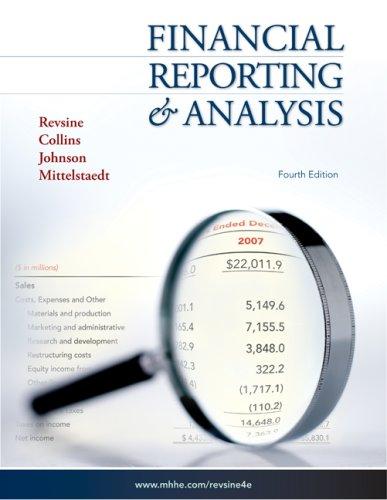Whole Foods Market is one of many companies today that use economic value added (EVA) as the
Question:
Whole Foods Market is one of many companies today that use economic value added (EVA)
as the performance metric for determining managerial compensation. Here's what Whole Foods Market has to say about its EVA-based compensation plan.
What Our Compensation Program Is Designed to Reward Our compensation program is designed to reward teamwork and each Team Member's contribution to the Company. In measuring the executive officers’ contribution to the Company, the Compensation Committee considers numerous factors including the Company’s growth and financial performance through reference to the following metrics. All of our executive officers participate in an incentive compensation plan based primarily on improvement in Economic Value Added (“EVA”). EVA is the primary basis for the Company’s financial decision-making tools and incentive compensation systems. In its simplest definition, EVA is equivalent to net operating profits after taxes minus a charge for the cost of capital necessary to generate those profits. High EVA correlates with high returns on invested capital.
The incentive compensation paid to the executive officers for fiscal year 2006 was based upon the incremental improvement in the Company's overall EVA, the number of new stores opened or acquired during the fiscal year, and the number of new stores opened with total development costs within the development budget minus a charge for the new stores opened with costs in excess of the development budget during the fiscal year. Fiscal year 2006 incentive compensation averaged approximately 49% of the total cash compensation earned by the executive officers.
Stock price performance has not been a factor in determining annual compensation because the price of the Company’s common stock is subject to a variety of factors outside our control. The Company does not have an exact formula for allocating between cash and non-cash compensation. Other than EVA pool and Benefit Hours pool balances (see below), compensation is generally paid as earned.
We also have a policy that limits the total cash compensation paid to any Team Member in each calendar year. The compensation cap is calculated each year as an established multiple of the average cash compensation of all full-time Team Members employed during such year. For fiscal year 2006, the Company increased the cap from 14 to 19 times the above described average. Employee benefits, stock options and any other form of non-cash compensation, such as the 401(k) match, are not counted in determining and applying the salary cap. Payouts under any EVA Incentive Compensation Plan (“EVA Plan”) fall within the scope of the Company’s salary cap policy. Per the EVA Plan, amounts are contributed annually to a “pool” for each Team Member based on EVA results. A portion of the annual EVA pool contribution may remain in the pool and a portion is paid out annually. Annual payouts are calculated as 100% of the pool up to certain job-specific dollar amounts plus a portion of the excess. If the EVA bonus to be paid out will cause the Team Member's cash compensation to exceed the annual salary cap, the amount above the cap is forfeited; the full amount which would otherwise be paid out (including amounts not actually paid to the Team Member) is still subtracted from the pool balance. The accumulated balance in any Team Member's pool account is limited to the amount of the salary cap. Team Members may take time off without pay in order to reduce their salary earned and increase the amount of bonus that can be paid within the cap. The salary cap does not apply in the Team Member’s year of termination or retirement.
Required:
1. Compared to GAAP earnings, what advantage does EVA provide as a performance metric for incentive compensation purposes? Why might this advantage be particularly important for companies such as Whole Foods Market?
2. Explain why Whole Foods Market does not use stock price performance to determine annual compensation for its executives. What mechanisms other than annual compensation might the company use to encourage managers to create shareholder value?
3. What impact (if any) does EVA use have on earnings management? In other words, will managers be more likely or less likely to use accounting tricks to achieve EVA bonus targets than is the case for traditional GAAP earnings targets?
4. Explain how the EVA pool works and why it might help overcome management’ tendency to focus on the short term.
Step by Step Answer:






